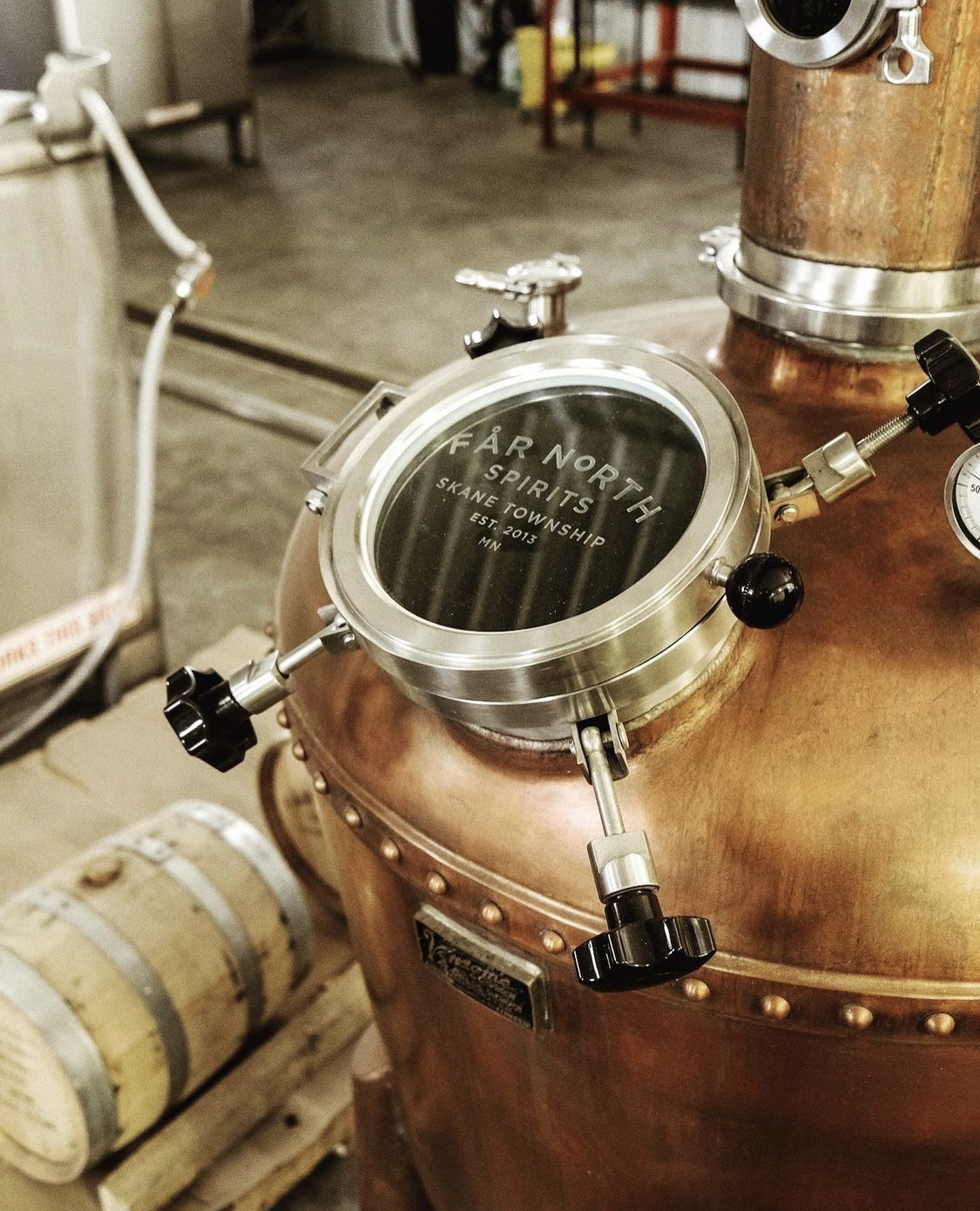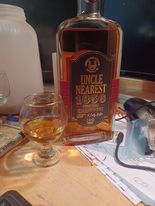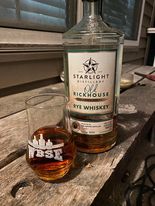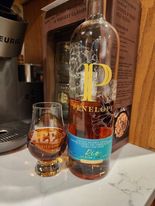The winters of northern Minnesota are brutal, desolate things. Growing up outside Kansas City, I thought I understood what cold meant – we have days in January and February that are deemed too dangerous to be outside, and we have our share of winter storms. But up in Hallock, Minnesota, where it often doesn’t rise above freezing from October to April, winter is something different. The culture and industries are built around it, and the cold it brings cuts to the bone in an instant and will kill you if you aren’t prepared for it.

In the midst of these brutal winters is a distillery doing incredible work in the field of whiskey. Far North Spirits, led by Michael Swanson and Cheri Reese, is a grain-to-glass farm and distillery integrating the science of biochemistry with the art of distilling. Their research has been used by MGP, and they passionately believe that the quality and strain of grain matters in the taste of whiskey. In applying their research, they’ve created new and exciting expressions that bear the mark of the brutal climate in which they were created. Michael was gracious enough to sit down with me for an interview in which we discuss distilling in northern Minnesota, their research into different varieties of rye, and how these varieties affect the whiskey Far North produces.

So, what are some of your early memories of whiskey?
When I was growing up, my dad and my brother and I went deer hunting every year. We’d go with these guys who were all World War 2 vets, and they all drank Manhattans. That was their thing. Some years it was whiskey and some years it was really cheap brandy that I just couldn’t stand. It was an interesting scene. And while I couldn’t stand the liquor sometimes, I thought it was cool that they would make these interesting cocktails at their deer shack, you know? It was this ritual they went through, and it helped me understand the ritual of whiskey and appreciate it.
It started there. Then over the course of my twenties and thirties I went through different phases of getting into Scotch, then bourbon. Then back in the early 2000’s I tried a rye that blew my socks off and from there I really developed an interest in rye. That was also shaped by growing up right near the Canadian border where if you ordered a whiskey, it was a rye.
How did that lead you to found Far North Spirits?
It was a combination of that love for whiskey and wanting to branch out from purely farming with the family farm. I didn’t want to just scale up and grow commodities – I’d seen how stressful that could be with family and friends. I started by being asked to come up with a business plan for a class in college. I thought of creating a distillery on the family farm and wrote up what that may look like. I pitched it to the class, and afterwards the professor emailed me and told me that it was a great idea and that I had to do it. I didn’t know how to make whiskey, but I knew how to drink it, and I had the resources to start. So I did!

What would you say the philosophy of the distillery is?
We really wanted to demonstrate the power of the agricultural component of whiskey. The power of varieties of grain, healthy soil, climate, and terroir and how those things contribute to the flavor of whiskey instead of just age and proof. And it’s been really interesting. We’ve learned a ton of things about our location and its effect on the flavors of whiskey.
We’re big believers in the “grain-to-glass” philosophy, which is essentially that what we put in the bottle at the end of the process was made by grain grown by us on our fields. The entire growing and distilling process takes place on our farm. This lets us connect the dots between healthy soil, healthy environment, healthy grain, and better tasting whiskey.
What’s it like distilling in northern Minnesota? I imagine the climate makes a huge difference in the process and the whiskey itself.
It absolutely does. One effect is that we focus on rye – that’s our specialty. One benefit is the way certain rye varieties respond to harsh climate. You can’t grow certain types of rye in a mild climate – it just doesn’t work. So we can grow things up here that others down south can’t.
There are certainly challenges too. When we go to do a new run of planting, we often have to blow piles of snow off the field first and clear it of winter debris. Keeping the equipment running when it’s 25-below is another challenge – making sure all this equipment runs in that kind of cold isn’t easy. And we have logistics issue sometimes – being in Hallock, Minnesota and so far away from anything makes distribution difficult. But at the same time, we’re in the middle of the continent, so there are benefits there too.
As far as whether it affects the whiskey, it definitely does, in a good way. Back when we started in 2013, we brought on David Pickerell of Maker’s Mark as a consultant. He helped with our preliminary mashbills and with obtaining equipment. One question I asked him was what kind of climate control we’d need for the aging room – he said none at all. We have incredible temperature fluctuations throughout the year – a 130-degree difference from January to August. You want that fluctuation. We swing from 20% humidity all the way up to 80%. Again, you want that. That will help expand and contract the wood, and the more that happens, the better depth and character the whiskey develops. We found that our whiskey developed a depth and character that our whiskey twice its age didn’t have. That has everything to do with our God-forsaken climate up here.

Tell me about the crop studies that you’ve done.
Sure. I was a biochemistry major in school, so I brought that perspective to my distilling. We wanted to further understand the effect that distilling different strains of rye has on the flavor of the whiskey, so we’ve done a couple of studies on various strains throughout the years. One of my first studies was on what happens if you use a variety that’s really old. I thought it might not be as successful in terms of yield, but maybe it has some different flavor. One of the trends I saw was that the open pollinated varieties had a much broader spectrum of flavor than the newer hybrids from Germany. The German hybrids have an amazing yield. It’s over double of what an open pollinated variety of rye will yield. It’s incredible stuff. But the flavor spectrum went from incredibly wide and diverse to a much smaller range. They didn’t taste bad, they just didn’t taste like a lot.
Right after I published my first study, I was contacted by a couple of guys at MGP. They were interested in the research because they had been doing some as well. They weren’t as happy with the variety that they’ve been distilling. They started studying a couple of key chemical compounds and they were analyzing different varieties of rye for how much of this compound each strain would produce. We found that the open-pollinated varieties, and in particular the one that we’ve been using, produced much higher levels of this stuff than the others they were trying. They had convincing evidence that showed that this compound, it was called 4 vinyl glycol or 4VG, was the precursor to the clove-like baking spice notes in rye whiskey. So they were chasing this compound down and we started finding that not only did the open-pollinated varieties have more of this stuff, but the varieties that we grew up here in Hallock produced more than the same variety growing somewhere else. We don’t know why, and that really intrigued me. So that’s why we’re starting our study now. We’re going to grow the same variety in different places in Minnesota and see if it produces different levels of this compound.
Tell me about your products. I assume you have several ryes?
We make a few different expressions of rye. Our flagship rye whiskey is called Roknar. It’s 80% rye, 10% corn, 10% malted barley. It’s aged in new oak, and we use Minnesota barrels. There are two world-class cooperages in Minnesota and we buy all our barrels from them. Most of those barrels are actually being made from oak from Minnesota trees as well, so it’s a true regional expression. We finish it in a cognac cask.
We also make single-varietal rye whiskies and these change every year because I grow different rye varieties. They are 95% rye, 5% rye malt from that variety. For example, right now I have Hazlet, which is the variety we’ve grown for 10 years. I have Musketeer, which is another Canadian variety that is pretty similar in the field but tastes very different coming out of the barrel. All my malt comes from a local maltster in Crookston, Minnesota, so all of my barley malts are custom. And then he custom malts rye for me with one variety.
Those single-varietals are the real direction that I want to take this. The name of the whiskey is the variety of the rye. And that changes the conversation to what does this actually mean and where does this name come from? It really connects the whiskey to the grain it’s distilled from, which fits into my vision for what grain-to-glass distilling should be.
Finally, we do our high-rye bourbon called Bodalen. I make three styles of gin and I make a couple different styles of rum as well, just for fun.

Next up is our mashbill questions – five quick hitters we conclude every interview with. Ready?
Shoot.
What was the last whiskey, bourbon, or scotch in your glass?
Our Hazlet single varietal, 6 years old, bottled-in-bond.
Do you prefer to drink your whiskey from a particular type of glass?
I like both the classic rocks glass and the Canadian Glencairn.
What’s your unicorn bottle?
It’s a super unicorn bottle because it involves time travel. Back in the 1790’s in northern Scotland this guy named Francis Swanson and his sons owned a farm and distillery. He was supposedly very picky about his barley varieties. The whiskey he made was sold in London, Brazil, and the European continent in very small amounts and was said to be amazing. If I could get my hands on that stuff that would be incredible.
I’m looking for a whiskey to give as a gift between $50 and $75. What should I grab?
In whatever part of the country you’re in, there’s a craft distillery making delicious whiskey in that price range. Support those craft distilleries and grab something from them.
What’s your favorite toast?
skål! Or I’ll also go with “May you be in heaven an hour before the devil knows you’re dead.”
Cheers. Any closing remarks?
I appreciate your time and appreciate what you’re doing. Thanks for having me.
Thank you! And welcome to the Whiskey Network family.








